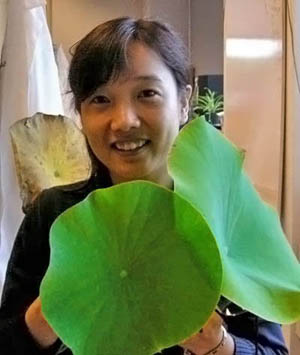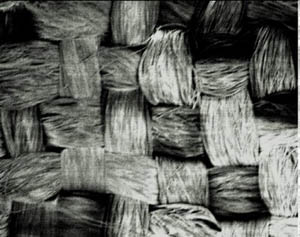US chemists celebrated the 4th of July with publication of one of the most sought after materials – one that emulates the incredible water-repellency and pollution-protective nature of the surface of the lotus leaf. Their research could lead to a new class of self-cleaning and protective materials for use in coatings for engineering structures from bridges and buildings to vehicles and planes and even new clothes that shrug off dirt.
Thomas McCarthy and Lichao Gao of the Polymer Science and Engineering Department, at the University of Massachusetts, Amherst, have taken a leaf out of the science history books to make their new material. The researchers have combined the work reported in a patent on water-repellency from 1945 with cheap commercial textiles to create what many materials scientists see as a Holy Grail in their field.

Thomas McCarthy
The lotus – Nelumbo lutea – sits on ponds and shrugs off even muddy waters. As such, it is revered as a symbol of purity in some Asian cultures because of its self-cleaning nature. Emerging from muddy waters, the sacred Lotus’s leaves unfold untouched by the pollution. It is the highly hydrophobic, water repelling, surface of the leaves that accounts for this. Materials scientists and engineers have been trying for many years to mimic the lotus effect in waterproof garments and other applications. Current efforts usually involve costly materials and complex, time-consuming manufacturing processes to apply surface coatings.
McCarthy and Gao write in the July issue of the journal Langmuir how modern technologists have ignored older scientific know-how, particularly that first reported in the 1940s. We stress that ‘superhydrophobicity’, as it is now called, was well-known in the 1940s, particularly by the textile industry and that imparting water repellent properties to textiles is an established and seldom referenced technology.”

Lichao Gao taking inspiration from lotus leaves
To illustrate their point, McCarthy and Gao created an artificial lotus leaf using a method they describe as “trivial” because it involves simply dipping the textile, whether a conventional polyester or a microfibre polyester fabric, into a silicon solution that was first described 60 years ago. The result is a highly water repellent material that is permeable to air and water vapour. The researchers explain that the simplicity, scalability, and wettability results of this approach suggest that this could be the most practical way to make so-called superhydrophobic surfaces, such as water-proof but breathable fabrics.

Hydrophobized microfiber polyester (Photo courtesy of McCarthy et al)
Interest in superhydrophobic materials has grown since the 1990s, but McCarthy and Gao have made public their concerns that researchers are often re-inventing the wheel and not necessarily making it perfectly round. Water repellency was a well-studied phenomenon in the 1940s and as they have shown with the development of their artificial lotus leaf could easily have led to new materials in subsequent years had researchers only investigated the earlier scientific literature sooner.
In related work, McCarthy told Spotlight, he and his colleagues have created a perfect hydrophobic surface on a silicon wafer. The process involves the phase separation of a silicone compound, methylsilicone, which is swollen with the aromatic solvent toluene and attached by chemical bonds to the silicon surface. The result, reported in a forthcoming issue of the Journal of the American Chemical Society, is a nanoscale network structure on the silicon wafer surface that repels water with the highest possibly effectiveness. Water drops on this surface are perfectly spherical, and as McCarthy explains, they physically do not “touch” the surface. A cup lined with this material would hold water, but it would not be touching the insides. You might say, it is better than water off a duck’s back.
Further reading
Langmuir, 2006, 22, 5998-6000
http://dx.doi.org/10.1021/la061237x
J Am Chem Soc, 2006, in press
http://dx.doi.org/10.1021/ja062943n
Thomas McCarthy
http://www.pse.umass.edu/~tmccarthy/